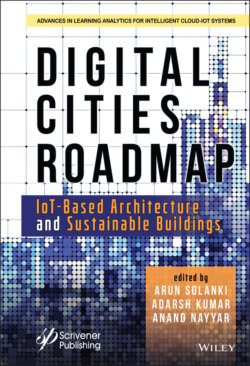Читать книгу Digital Cities Roadmap - Группа авторов - Страница 22
1.5.1. Resilience and Sustainable Development Framework for Decision-Making
ОглавлениеA program delegate must be developed to encourage the creation of decision-making resources for the resiliency, healthy community and to promote the rating of decision-making options in line with the information required, compatible with priorities and goals and conforming to potential requirements. The following introduces a structure representation paradigm, which fits closely Faber et al. [58].
• Analysis system representation of hierarchical decisions
In order to help decisions about the management of processes, it is essential to create structure representations that regularly chart potential alternative options for decision-makers and the stakeholders involved in achieving their priorities. This assumes that the nature of the structures is decided by the policy makers, stakeholders and their choice, time-boundary and spatial limits, the functional features and functionality of the systems and their impact on system efficiency, and feasible and appropriate decision-making alternatives.
In other governance contexts, such as private organizations, or industrial practices, the overarching concept which underlies the hierarchical governance system seen in Figure 1.3 may be extended.
Theoretically, it is important for decisions to be rated in accordance with their anticipated worth (or benefit) in accordance with the Bavarian Decision Analytics and the axioms to be made in order to automate the design and/or the management of engineering systems subject to complexity and inadequate information in a normative decision sense.
The structure as outlined in Figure 1.4 incorporates not just threats in terms of potential negative value in various applicable indicators (e.g. negative in life, disruption to environmental values and financial losses) but also gains linked to decision-making options—the key goal of optimized structures—as opposed to more traditional risk-informed solutions to decision-making. The expansion supported the way Section 4 discusses durability and longevity as a framework for evaluation for stability outlined by Linkov et al. [59], thus accurately correcting typical risk modeling limitations. Specific decision alternatives to designed device architecture and management in accordance with the predicted utility benefit or any particular metrical requirements can be assessed and classified according to the device modeling paradigm as outlined in Figure 1.5.
Figure 1.3 Decision making resilience and sustainable development framework.
Figure 1.4 Bavarian decision analytics.
Figure 1.5 Framework system modeling.
